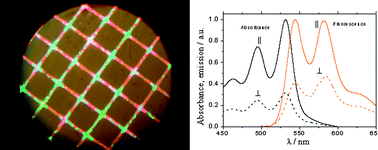Photopatternable fluorescent polymer composites based on stretched porous polyethylene and photopolymerizable liquid crystal mixture†
Abstract
A novel approach for the creation of photopatternable fluorescent polyethylene-based liquid crystal composites was developed. Stretched porous polyethylene (SPPE) films were used as the


 Please wait while we load your content...
Please wait while we load your content...